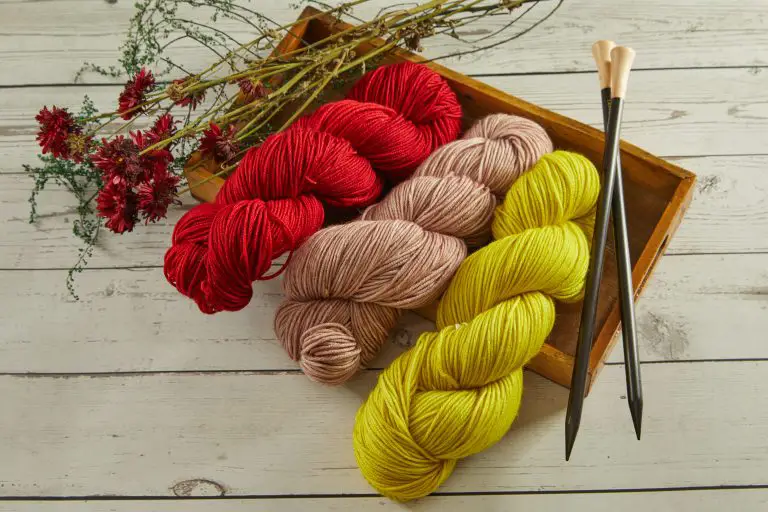Understanding yarn is the first step in planning any fiber-related crafts, whether it's knitting, crocheting, or punch needle art. And, if you are into designing projects then you simply cannot miss understanding the nitty-gritties of yarn. Even if you are following the pattern instructions of a designer, it is always handy to be aware of terms such as the yarn weight table, as it helps you with fiber substitution and avoiding mishaps with your knitting or crocheting project. It is important to know about ply and thickness to understand yarn. These terms refer to two different aspects of yarn and play their unique role in determining the yarn size.
In this blog we’ll walk you through yarn ply and thickness, making it easy to plan projects and have fun with crafting and help you clarify your doubts.
What is Yarn Ply?
Ply refers to the number of strands intertwined within a yarn. The term ‘ply’ pertains to yarn thickness in Australia and New Zealand, while in America and Europe this refers to the number of strands. A 4-ply yarn is a general size that is used for a variety of projects while the standard range from a 2-ply to going almost up to 15-ply. Interestingly a two-ply yarn could be bulky, while a four-ply yarn could be exquisitely fine as it depends on the yarn manufacturers or dyers. A 4-ply wool is different from a 4-ply cotton yarn as the fiber is different in them.
What is Yarn Thickness?
Yarn thickness is a concept that talks about the weight and look of the yarn. The standards for thickness start with fine lace weight, sock-knit (fingering), or double-knit (DK) yarns to chunky and bulky variants. The general rule of yarn thickness is lighter weights are used for knit or crochet projects such as lace knitting, while DK used for a variety of projects such as shawls, sweaters and chunky weights used for chunky blankets or home decor.
Differences and Similarities between Yarn Ply and Thickness
Yarn ply and thickness refers to different terms. A 2-ply yarn denotes two single strands while a 4-ply yarn refers to four individual threads. Generally, or according to standard yarn instruction, a 2-ply refers to lace weight yarn while fingering weight or sock yarn goes by 4-ply, and DK weight yarn, known as double-knit, is denoted by 8-ply. Worsted is 10-ply, and moving to bulky, chunky, and jumbo weight, it goes up to 15-ply. Most pattern designers mention both the terms and if they don’t, they refer to the general standards.
The Easy Solution
A single solution is impossible when it comes to yarn ply and thickness but following the Standard Yarn Weight System is easy. The Craft Yarn Council of America (CYCA) Standard Yarn Weight System employs numerical categories for yarn thickness making comprehension easy across the globe. The scale ranges from one to seven, encompassing the finest to the bulkiest yarns.
While recent patterns typically adhere to the CYCA's system for specifying yarn, there are also patterns specifying ply count.
The Craft Yarn Council of America provides a yarn classification table as a reference for correlating weight with ply count.
|
Yarn Category |
Description |
Crochet hook |
Crochet Hook size |
Knitting needle |
Knitting needle size |
|
Lace |
fingering, crochet 10 -count thread |
1.5 – 2.25 mm |
B-1 |
1.5mm – 2.25mm |
0 – 1 |
|
Super fine |
sock, fingering, baby |
2.25 – 3.5 mm |
B-1 – E-4 |
2.25mm -3.25mm |
1 – 3 |
|
Fine |
sport, baby |
3.5 – 4.5 mm |
E-4 – 7 |
3.25mm – 3.75mm |
3 – 5 |
|
Light |
DK, light worsted |
4.5 – 5.5 mm |
7 – I-9 |
3.75mm – 4.5mm |
5 – 7 |
|
Medium |
worsted, Aran |
5.5 – 6.5 mm |
I-9 – K-10 1/2 |
4.5mm – 5.5mm |
7 – 9 |
|
Bulky |
chunky, craft, rug |
6.5 – 9 mm |
K-10 1/3 – M-13 |
5.5mm – 8mm |
9 – 11 |
|
Super Bulky |
bulky, roving |
9 – 15mm |
M-13 – Q |
8mm – 12.75mm |
11 – 14 |
|
Jumbo |
jumbo, roving |
15mm and higher |
Q and larger |
12.75mm and higher |
14 – 17 |
A crafter’s secret to simplifying yarn weight and thickness is to not go by the yarn label and work on a gauge swatch. Take up your knitting needles or in the size mentioned and work on making a small gauge. This little piece of fabric will help you understand your yarn, get the right size of your tools and showcase an example of how the project will turn up.
Tips to keep in mind
- Every yarn brand is different and a 2-ply yarn in one batch may not be the same in a different brand.
- Hand-dyed yarns are bulkier in thickness compared to their undyed counterparts, even though both may have the same ply-count.
Have fun with your yarn crafting!






